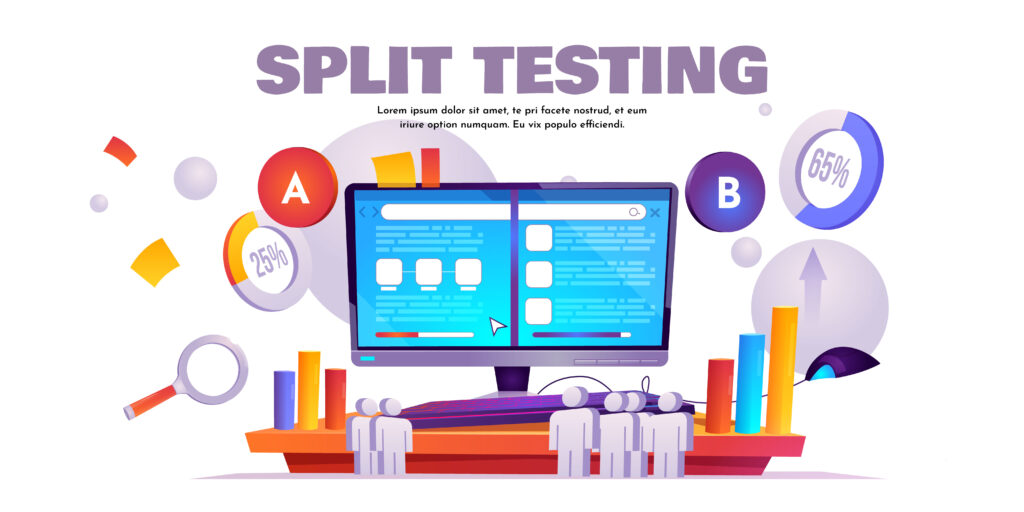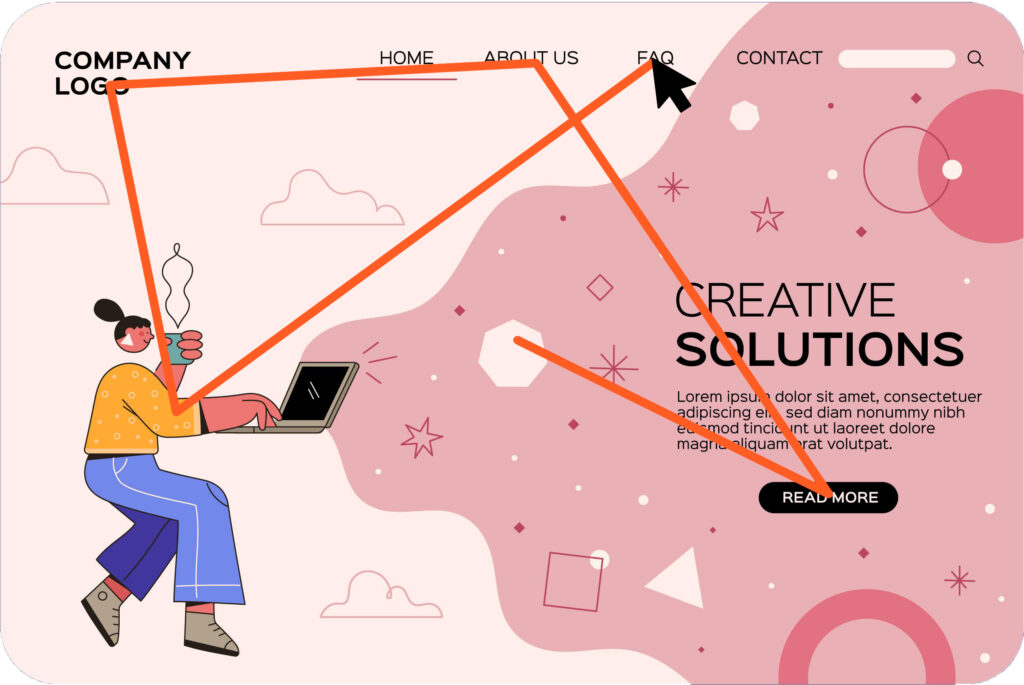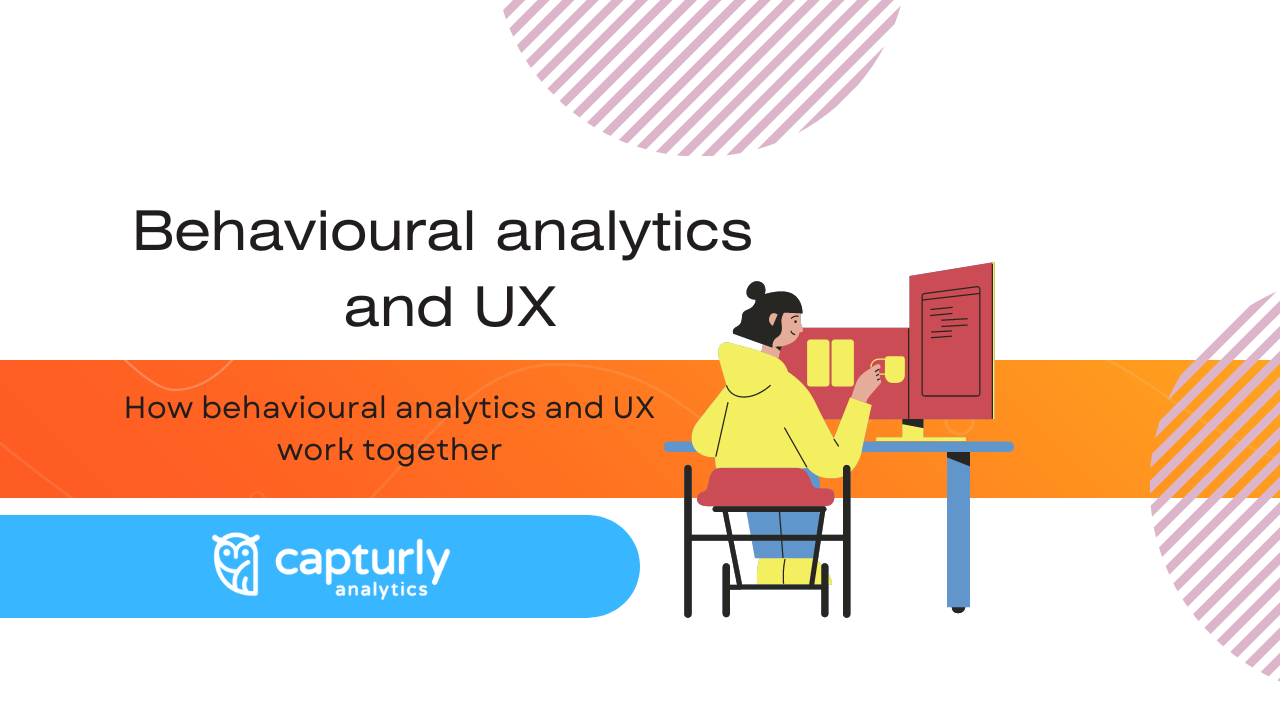According to UXCam, the primary goal of user behavior analytics “is to identify whether there are any security incidents taking place.” When UX enters the picture, it’s not just about security, you’re focusing on improving the user experience on your website purely through observation.
You know when you enter a website and receive the notification about cookies? Assume that the company observes your session on the website to some capacity for the purposes of the website’s own security and hopefully to improve the UX. The cookies “help that website remember information about your visit, which can both make it easier to visit the site again and make the site more useful to you,” according to Google.
But why is it important for a website to collect behavioural analytics? And how is that data being used?
Table of Contents
What is behavioral analytics?
Put simply, behavioral analytics is data regarding the actions that your users take on your website or app. The purpose of collecting behavioral analytics will depend on the purpose of your digital solution.
I like to think about behavioral analytics as a combination of quantitative and qualitative data (though it is technically qualitative). Because of the different tools for collecting behavioral analytics (which I’ll jump into soon), the data feels almost as solid as hard numbers, but there is still some interpretation and observation required to discover themes.
Here are a few sectors that commonly collect behavioral analytics:
E-commerce
This is a big one. An e-commerce site is all about conversions (making sales), so it’s important to discover your users’ pain points throughout their shopping journey.
If your website isn’t e-commerce, but you depend on it for other types of conversions, like booking meetings or providing quotes on projects, then you need to know the best way to encourage your users to take the desired action.
Gaming

For gaming, behavioral analytics is all about usage trends and gamer preferences. In many instances, there is also an element of e-commerce because of the possibility of in-app purchases.
This applies to all web-based gaming. For example, Fortnite and Apex Legends are free games played on console or PC, and they both have in-game purchases. While the game developers aim to improve the gameplay for their users, they also need to know how to encourage sales as much as possible without sacrificing the quality of the gameplay.
Security
Behavioral analytics has a history of being used for security reasons. Sometimes, websites store valuable data, like credit card information, and this makes the website a potential target for attacks. Collecting behavioral analytics is a great way of flagging any unusual or suspicious actions taking place on the website.
Identify objectives before analyzing behavioral analytics
For UX research, the first step is typically interviewing or meeting with stakeholders in order to determine your goals for the research being conducted. Collecting data for the sake of collecting data can be useful, but usually the goals determine the research tools and methods.
Consider meeting with your stakeholders individually in order to get everyone’s perspective on current challenges and potential obstacles for users. In a group setting, you can overlook someone’s perspective, or someone may feel like they’re not in a position to voice a specific concern.
In Think Like a UX Researcher by David Travis and Philip Hodgson, they explain how stakeholders often want to discuss potential solutions, and how this is not the best way to determine your research objectives.
Travis and Hodgson say that it’s best to steer the conversation away from potential solutions by asking questions about the stakeholders’ perceived issues. You can also ask things like, “What will happen if we do nothing?” This is a good way of encouraging stakeholders to talk about potential issues, their fears and concerns, and could help reinforce the value of proper user research.
Brainstorming solutions is something that happens in the middle of your design-thinking cycle. First you need to empathize and define, then ideate, and then prototype and test. The online learning platform, Interaction Design Foundation, explains the importance of this iterative process.
How to collect behavioural analytics
So now that you understand what you’re trying to accomplish by tracking behavioural analytics, let’s take a look at a few different tools.
A/B testing

Whether you’re testing a website, landing page, or an email campaign, A/B testing will help increase your conversions. It’s as simple as creating two or more versions of the same thing and then getting your users to interact with them.
For example, you design an email announcement that will be sent out to all your subscribers with the goal of sending people to a specific page. Design two versions and see which one performs better, and then you know which design to use in the future. Another example would be a landing page with an RSVP button; design two different layouts and see which one results in more RSVPs.
It’s important to keep in mind that there should be an original design and then a modified design, meaning the second design shouldn’t be completely different. Base your modification on your primary objective and perhaps some previous research.
Heatmaps

Knowing where people click on your website is essential, and a heatmap can show you exactly where your users are spending the least and most amount of time. Typically, areas with the most traffic on your website turn up orange to red on the heatmap.
If you know where your users are focusing their attention, then you have a better idea of where to place your calls-to-action (CTA).
Capturly has a Scroll Heatmap that allows you to determine how far your users scrolled on your website. So instead of monitoring clicks, the Scroll Heatmap allows you to see the more active sections of your scrolling website. If there’s an area that’s particularly hot, that might be a great place for a CTA. You can also see where your users lose interest and leave the website.
One more tool that is important to highlight is Capturly’s Segment Heatmap, which highlights your referrers. This means you can see where on your website your users are clicking, and also how they got to your website, for example, from Google or Facebook.
When you discover where most of your users are coming from, it can help you determine other things like where you might want to increase your ad spend or which platforms you should be prioritizing for content creation. This also leads to things you may need to A/B test – it’s all connected!
Session recording

Every UX researcher must have powerful observation skills, whether you’re conducting usability tests, ethnographic or field studies, or contextual inquiries. So it shouldn’t be a surprise that session recording is a popular tool for collecting behavioural analytics for your website.
The UXtweak Session Recording tool is easy to install and gives you the power to observe every click and scroll. The interesting thing about the session recording tools is that it’s not a recording at all, the playback is a reproduction of the user’s activity on your site. It looks like a video, but it’s not. It’s a fully-inspectable re-creation of your site, including the DOM (Document Object Model).
You can filter the behavior you want to analyze and even filter the types of users by things like location or device, so it’s quantitative and qualitative data all in one.
The benefit of collecting behavioral analytics
At this point, you may be asking, why would I run something like usability tests if I can just use heatmaps, A/B testing and/or session recording?
The benefit of collecting behavioral analytics is that the data collection part is mostly passive, but these tools won’t always give you all the answers you need. Your key findings from your behavioral analytics will likely inform other types of UX research like the tasks you write for your usability tests or the questions you come up with for some semi-structured interviews.
For example, a heatmap might show a lot of time spent on a certain section of the page, but you may not know why. Is it because there’s something in that section that’s attracting users, or are they lingering there because they are confused? You can’t ask your users what they’re thinking with an unmoderated heatmap, but you can during a usability test.
One other benefit of behavioral analytics is that you are observing truly natural behavior. In a usability test environment, you are providing tasks for your participant, there are cameras running, they are answering questions and thinking aloud, so a lot is going on.
You get to observe the user and dig deeper, but there’s the risk of your bias and their bias entering the study. Even if you are a professional UX researcher and remain completely neutral throughout the test, there’s always the possibility that your participant will change their actions in order to do what they think you want them to do, this is participant bias. There are ways of preventing participant bias, but that’s a whole other blog post!
The main benefits of collecting behavioral analytics are:
- Data collection is passive and quick
- User behavior is natural
- It can inform further UX research
What to do with your behavioural analytics
You have all this great data, now what? You analyze and synthesize, brainstorm potential solutions, prototype and test, and repeat!

A common deliverable for UX researchers is a journey map, and behavioral analytics allow you to create a detailed journey map to present to your team. This is a good way of presenting your findings and helping your team empathize with your users.
For example, if you have an e-commerce website and your goal is to improve conversions (make sales), you can create two journey maps: one of a user landing on your website and making a purchase with every action in between detailed, and a second one of a user who abandoned a cart. Based on your behavioral analytics, you can confidently differentiate the two journeys, which will help you and your team determine potential solutions. Perhaps the users who abandoned the cart lived in a location where shipping was high, or maybe you discover that the checkout button is poorly placed.
Anything is possible and you won’t know where to focus your time and resources unless you have the data. Without UX research, you’re just designing at random and seeing what sticks. Of course, there are best practices to follow, but you should still treat your users as unique to you, it’s the best way to empathize and make a meaningful impact.
As you know, this is an iterative cycle. You and your team should decide which potential solutions are most actionable and then put them into development. When those designs are complete, start testing again. Depending on the size of your team and the resources at hand, you can be conducting a whole other research study while your colleagues work on their redesigns.
It’s almost impossible to discover all the pain points for your users with a single research study, and your user base also evolves with your digital offering, so things are always in a state of change. Keep researching, keep testing, keep improving.
The importance of ethical data collection

The Facebook and Cambridge Analytica fiasco got a lot of people talking about ethical and unethical data collection. They aren’t the only big company guilty of unethical data practices; France fined Google $57 million for breaking a privacy rule, Uber paid a $148 million fine for a 2020 data breach, and Twitter paid a $150 million fine for its unethical data collection – just to name a few.
For some users, the idea of their entire website session being recorded or monitored is unnerving, and the last thing you want for your brand is to appear untrustworthy.
Here are some tips to ensure your data collection is ethical:
- Keep all data anonymous
- Only track behavior on your own website
- Be transparent about your data collection methods
- Get permission to use cookies
- Receive consent to share data with third parties
- Only use the data for your stated purpose
- Keep all data secure
You should also consider the location of your business because different jurisdictions have different privacy and data collection rules. For example, earlier this year, the government of Canada proposed the Consumer Privacy Protection Act, which outlined several new measures to protect Canadians’ private online data and introduced hefty fines for non-compliance.
“In today’s economy, Canada’s competitiveness depends on our ability to use digital innovation to harness the power of data,” says The Honourable François-Philippe Champagne, Minister of Innovation, Science and Industry, in a press release.
“Safety and trust must be the foundation of this new digital economy. By introducing the Digital Charter Implementation Act, 2022, we are ensuring that Canadians can trust when and how their information is being used. It will also give businesses clear rules to support their efforts to innovate with data and will introduce a new regulatory framework for the responsible development of artificial intelligence systems, while recognizing the need to protect young people and their information. This will not only promote confidence in the digital space but also ensure a safe, more inclusive and secure digital economy for the benefit of all Canadians.”
Behavioral analytics is key to website success
Let’s take a UX researcher approach to the idea of collecting and tracking behavioral analytics. Ask yourself this question: What will happen if I don’t know how my users interact with my website?
There are many possibilities. You could miss out on potential conversions, lose subscribers, make a bad first impression, miss a simple opportunity to dramatically improve your UX or adapt to a new usage trend, lose out on quoting opportunities, etc.
Consider behavioural analytics another asset in the UX researcher tool kit. Quality data can lead to game-changing design solutions and inform further research. Your website can survive without behavioural analytics, especially if you’re conducting other methods of UX research like usability tests, but the more data to inform, inspire, and confirm your design decisions, the better.
Don't forget, sharing is caring! :)


2 Comments
Flight Data API
2023-05-03 at 09:34very good article by the way, thanks for sharing this!
Travel agency software
2023-05-22 at 12:44Cool article.